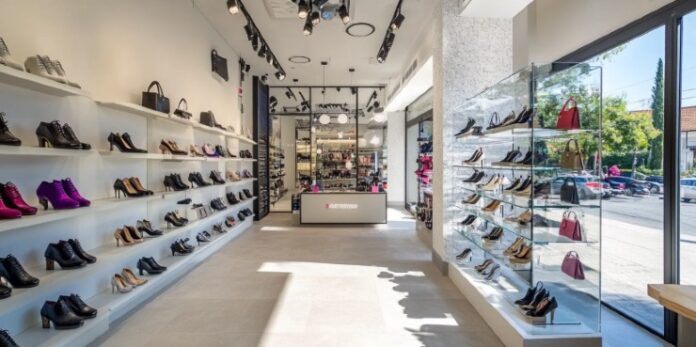Two decades ago, the retail landscape looked entirely different. The dot-com bust had left its mark, ecommerce was still in its infancy and mobile shopping was a distant vision. Malls were the epicenter of retail, and POS systems were clunky, on-premise solutions.
Fast-forward to today, and retail has evolved into a dynamic, omnichannel ecosystem where the lines between online and in-store shopping continue to blur.
Retail technology has evolved rapidly, helping businesses adapt to new consumer expectations and industry shifts. From the rise of cloud-based POS systems to the power of data-driven insights, modern solutions are designed to simplify operations and support long-term growth in an ever-changing market.
The retail journey has become increasingly personalized and experience-driven. While older demographics continue to rely on traditional retailer websites and trusted reviews, younger shoppers expect tailored, immediate and interactive experiences. Notably, 77% of Gen Z and young Millennials are more likely to subscribe to retail memberships, seeking VIP benefits like early product access, exclusive recommendations and priority service.
Retail has transformed from being purely transactional to deeply experiential. Whether it’s the tactile appeal of in-store browsing, the convenience of ecommerce or the engagement of social discovery, customers are looking for meaningful, connected experiences.
Looking back on the last 20 years, it’s shown that in order to succeed, retailers need to embrace change, stay agile and turn challenges into opportunities for growth. The past two decades have been a testament to the power of innovation, and the next 20 promise even more transformation.

The Rise of Ecommerce and the Resilience of Physical Retail
The dot-com bust of the early 2000s gave way to the gradual rise of ecommerce, which has fundamentally changed the way consumers shop. As ecommerce became more and more prevalent, there were predictions that this rise would ultimately lead to the death of in-store shopping, fortunately this prediction proved to be false.
Despite the rise of ecommerce, physical retail remains strong. A recent Lightspeed survey found that 56% of U.S. shoppers and 64% of Canadian shoppers still prefer in-store shopping for most purchases—proof that brick-and-mortar isn’t just surviving; it’s thriving.
While consumers appreciate the convenience of ecommerce, many still prefer the in-store experience for a variety of reasons, including the ability to see, touch and try products before purchasing, as well as the social and experiential aspects of shopping. This continues to be an important part of the shopping experience, with many consumers focusing more on omnichannel, such as discovering brands online and then completing the sale in store.
It’s this omnichannel experience that has proven to be a strength for brands and retailers that have embraced it, offering the ability to provide a seamless shopping experience and a more personalized consumer touchpoint.
The Shifting Consumer Landscape
Consumer expectations have also evolved significantly over the past two decades. Today’s consumers, particularly younger generations like Gen Z and Millennials, are more informed, connected and demanding than ever before. They expect personalized, seamless and convenient shopping experiences across all channels. Social media and influencer marketing have become increasingly important in shaping consumer preferences and purchasing decisions, while the resurgence of localism has led to a renewed appreciation for local businesses and products.
Shifting consumer preferences is a constant battle for retailers, and the ability to react to changing habits while maintaining a sense of stability within their business operations can prove to be a challenge. Having a pulse on things like seasonal trends, shifting product demands and consumer loyalty preferences are a few ways that retailers can ensure they are able to keep ahead of demand.
The Evolution of Black Friday and Cyber Monday
The evolution of Black Friday and Cyber Monday (BFCM) showcases how retail has transformed over the past two decades. Once centered around in-store shopping, BFCM has become a digital-first event, with online sales during Cyber Week 2023 reaching $38 billion—a 7.8% increase from the previous year. Cyber Monday alone accounted for $12.4 billion, growing 9.6% year-over-year.
Mobile commerce played a major role in this shift, with 57% of Cyber Monday purchases made on mobile devices, totaling $7.6 billion—a 13.3% increase. Additionally, the rise of alternative payment methods like Buy Now, Pay Later (BNPL) saw a record 42.5% increase, demonstrating consumers’ preference for flexibility and convenience.
Despite the digital surge, brick-and-mortar retail remains relevant. In 2023, 81.7 million shoppers visited physical stores on Black Friday, up from 76.2 million in 2022—the highest number since the pandemic. This resilience highlights the enduring appeal of in-store experiences, even as e-commerce continues to grow. As shopping behaviors evolve, retailers must strike a balance by optimizing online and mobile shopping experiences while continuing to offer engaging in-store interactions.

The Rise of Experiential Retail
As retail becomes more competitive, businesses increasingly focus on creating unique and memorable shopping experiences to differentiate themselves from the competition. This trend toward experiential retail is driven by the recognition that consumers are not just looking for products but also for experiences that connect with them on an emotional level.
Examples include:
- In-store events & workshops – Bookstores hosting author signings, fashion retailers offering styling sessions or home improvement stores running DIY workshops.
- Personalized shopping experiences – AI-powered recommendations, appointment-based shopping and concierge services that cater to individual preferences.
- Immersive technology – Augmented reality (AR) try-ons in beauty and fashion, virtual showrooms for furniture retailers and interactive digital displays.
- Community-driven spaces – Coffee shops within bookstores, co-working spaces inside retail stores or fitness classes hosted by athleisure brands.
- Gamification & rewards – Retailers using mobile apps for interactive challenges, loyalty programs with experiential rewards and in-store scavenger hunts.
These experiences help retailers build deeper customer relationships, increase foot traffic and drive brand loyalty in an evolving market.
The Importance of Technology
Technology has played a crucial role in enabling the transformation of retail. From cloud-based POS systems and advanced inventory management tools to data analytics and AI-powered personalization, technology has empowered retailers to meet the evolving needs of consumers and stay ahead of the curve.
By leveraging innovative, AI-powered solutions, businesses can save time with automated inventory tracking, reduce costs through streamlined operations and increase revenue with data-driven insights that enhance customer experiences.
The future of retail is likely to be shaped by a number of trends, including the continued growth of ecommerce, the increasing importance of personalization and experiential retail and the ongoing integration of technology into all aspects of the shopping experience. As the retail landscape continues to evolve, businesses that can adapt to change, embrace innovation and deliver exceptional customer experiences are likely to be the ones that thrive in the years to come.
Michael Ganci is the managing director of Retail at Lightspeed.





